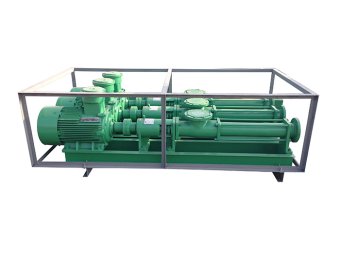Understanding Industrial Screw Feeders An Essential Component in Material Handling
In the realm of industrial manufacturing and processing, efficient material handling is critical to success. One of the key components in achieving this efficiency is the industrial screw feeder. Screw feeders play an essential role in the transport and regulation of bulk materials in various industrial applications, making them indispensable in sectors such as food processing, pharmaceuticals, chemicals, and plastics.
What is an Industrial Screw Feeder?
An industrial screw feeder is a mechanical device used to convey bulk materials from one location to another in a controlled manner. It consists of a rotating helical screw within a tube or trough, which moves material by means of the screw’s rotation. The design allows for the precise regulation of flow rates and is suitable for both granular and powdered materials.
Working Principle
The operation of a screw feeder is straightforward yet efficient. The rotating screw creates a moving bed of material, which is continuously pushed forward as the screw turns. The speed of the screw can be adjusted to control the rate at which the material is fed into a process. This is particularly essential in applications where specific ingredient proportions must be maintained.
The working principle relies on a few fundamental parameters
1. Auger Design The configuration and pitch of the screw greatly influence the flow characteristics. Coarse materials may require a wider pitch, while fine materials can use a tighter pitch. The choice of materials used for the screw also plays a critical role in durability and resistance to wear.
2. Motor Speed The speed at which the screw rotates can be controlled electronically, allowing for real-time adjustments based on system needs. This flexibility is crucial in industries that demand precision and adaptability.
3. Hopper Design The design of the hopper from which the materials are drawn is equally important. It must allow for a consistent flow of materials into the screw feeder without causing clogs or inconsistencies.
Applications of Screw Feeders
Screw feeders have a wide range of applications across various industries
1. Food Processing In food production, screw feeders are used to convey flour, sugar, and other ingredients with precision. They help maintain hygiene and ensure the mixture’s quality is not compromised.
industrial screw feeders
2. Pharmaceuticals In the pharmaceutical industry, the accurate dosing of powders and granules is critical. Screw feeders ensure that exact quantities are met, which is crucial for compliance with stringent regulations.
3. Plastics and Chemicals For the plastics and chemicals industry, screw feeders allow the efficient transport of materials like pellets, powders, and granules. Their robust design can handle abrasive materials, ensuring durability and reducing the need for frequent maintenance.
4. Construction Materials In the construction sector, screw feeders are used to handle bulk materials like sand, gravel, and cement. Their ability to operate in rugged environments makes them ideal for construction projects.
Advantages of Using Screw Feeders
Screw feeders provide several advantages that make them a preferred choice in various applications
- Precision The ability to control the feed rate allows for precise ingredient blending, which is essential in many industries.
- Versatility Screw feeders can accommodate a variety of materials, ranging from fine powders to coarse granules.
- Space Efficiency Their compact design saves space and fits into existing process systems seamlessly.
- Minimal Maintenance Designed for high durability, screw feeders require relatively low maintenance, reducing downtime and operational costs.
Conclusion
In summary, industrial screw feeders are a vital part of effective material handling in numerous industries. Their ability to provide precise control over material flow while maintaining durability and flexibility makes them invaluable in today’s fast-paced manufacturing environments. As technology evolves, screw feeders continue to integrate with automated systems, enhancing their efficiency and reliability. This ensures that industries can maintain productivity while meeting high standards of quality and safety.
 Linear Motion Shale Shaker In Drilling Rig
Linear Motion Shale Shaker In Drilling Rig  Oilfield Mud Cleaner
Oilfield Mud Cleaner  Drilling Fluid Decanter Centrifuge
Drilling Fluid Decanter Centrifuge  Drilling Mud Desander
Drilling Mud Desander  Hydrocyclone Desilter
Hydrocyclone Desilter  Centrifugal Pump/Centrifugal Mud Pump
Centrifugal Pump/Centrifugal Mud Pump  Shear Pump
Shear Pump  Jet Mud Mixer
Jet Mud Mixer  Horizontal Mud Agitator
Horizontal Mud Agitator  Constant Pressure Drilling Fluid Mud Gas Separator
Constant Pressure Drilling Fluid Mud Gas Separator  Mud Gun
Mud Gun  Mud Tank
Mud Tank  Solids Control System Vacuum Degasser
Solids Control System Vacuum Degasser  Flare Ignition Device
Flare Ignition Device  Diesel Tank
Diesel Tank  Submersible Slurry Pump
Submersible Slurry Pump 





































